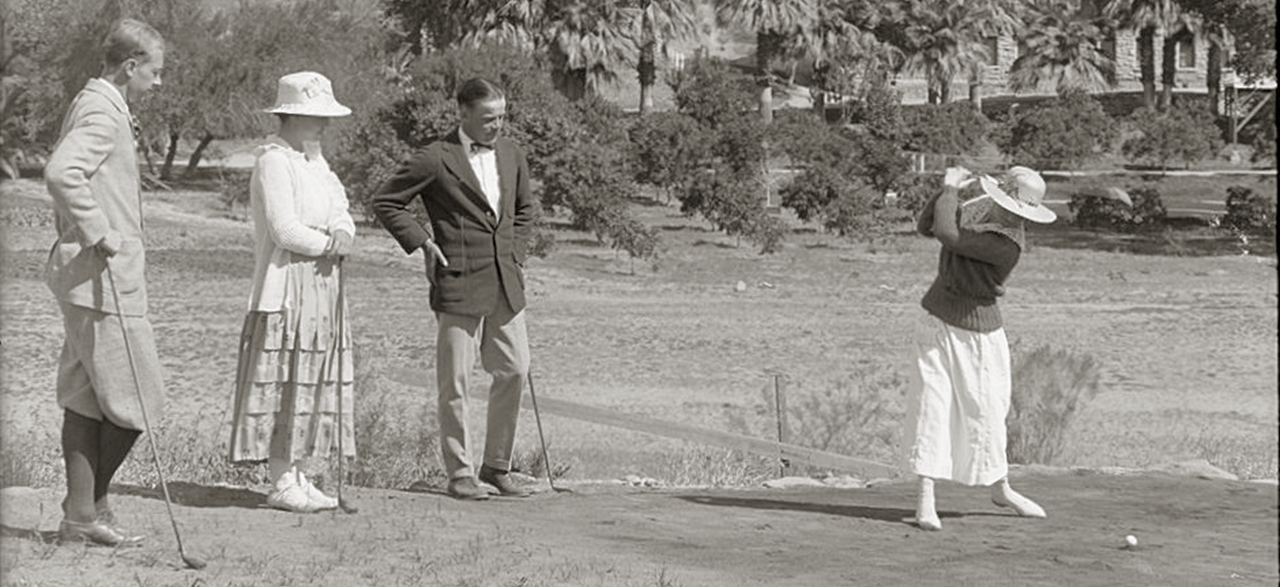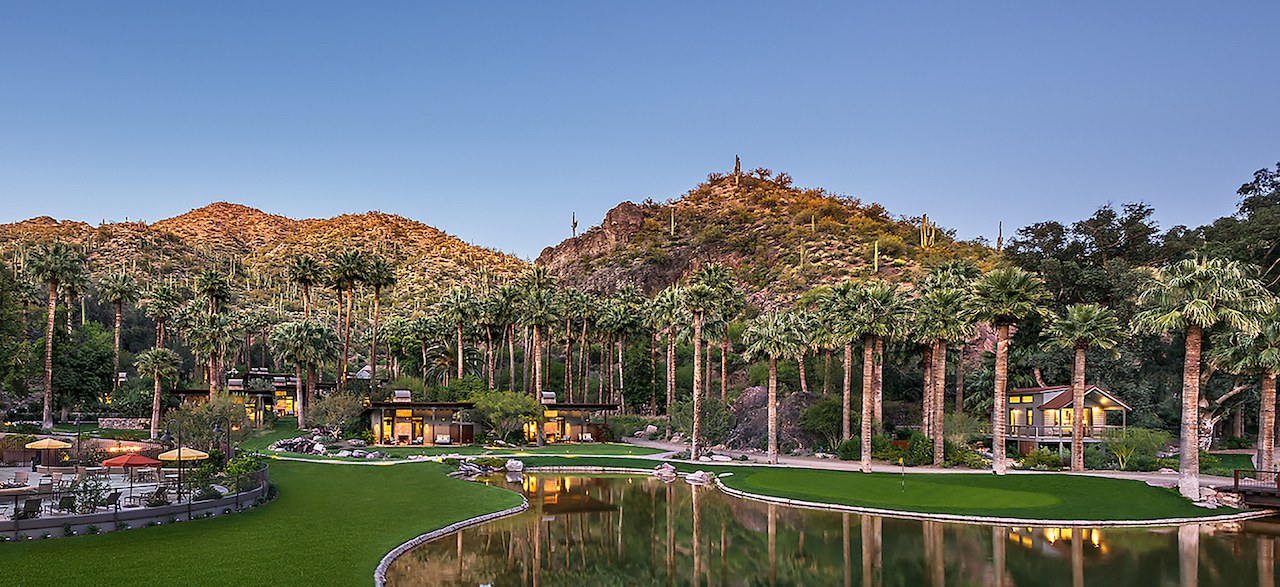Project Description
Project Overview
Castle Hot Springs, founded in 1896 and located in the foothills of the Bradshaw Mountains, is known for its 120-degree natural hot springs bubbling out of a small canyon. In its heyday it attracted many famous families, including the Wrigleys, Vanderbilts and Rockerfellers. The resort closed in 1976, but in 2018-19 was completely restored with new bungalows added. Grounds and meeting spaces were renovated and restored.
Our work was to design and build a new green to be the target for evening closest-to-the-pin contests. The green is situated on the edge of a small pond “just a half wedge away from the new swimming pool and patio spaces”. Mike Watts, leader of the resort’s re-development group, has a vision of guests enjoying a beverage before dinner, taking aim at the green from an elevated tee. The target will also serve as a putting green during the day.
The new design has become known as the ‘Betting Green,’ and comes after an original 9-hole pitching course was abandoned many years ago. That short course, believed to have been designed by William P. Bell, was created in the 1920s at the invitation of William Wrigley Jr. (founder of Wrigley’s gum), who purchased and upgraded Castle Hot Springs as a retreat for the rich and famous. At around the same time Mr. Wrigley was busy completing ‘La Colina Solana’, now known as the Wrigley Mansion, in Phoenix, which would include an 18-hole Bell layout as part of the Arizona Biltmore Resort.
Mr. Wrigley came to know Billy Bell over several projects, as we know from our many assignments working with Bell designs. Historic aerial photographs of Castle Hot Springs that show golfers on a short layout. Other archive images show Victorian-era visitors putting towards wooden flagsticks adorned with hand painted hole number medallions.
According to Richardson, Bell was among a handful of Golden Age designers that believed in the shorter formats of golf. Bell never forgot how difficult the game is for beginners, and many of his short course ideas and plans carried over to his son, William F. Bell.


